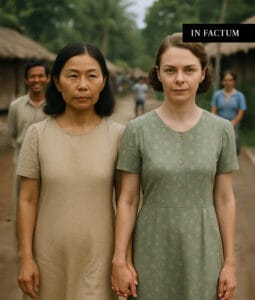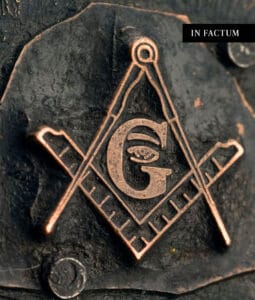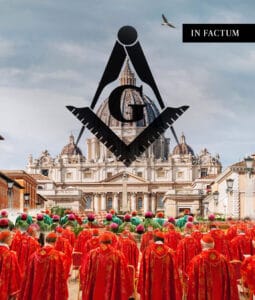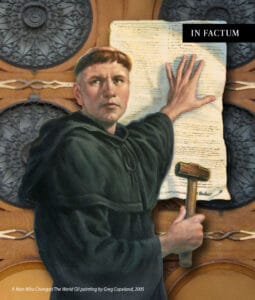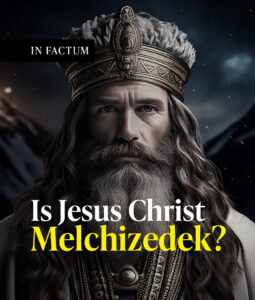- 1
- 2
- 3
- 4
- 5
- 6
- 7
Perhaps, it would need another search by the holy empress to really find where the cross was first planted for the first mass ever for even through the historical commission had deemed the case closed, that it was indeed Limasawa. Siaga’s noble descendant Rajah Eddie Asaytona claims otherwise. He says it is in Masao, in the Butuan delta. I am myself a sign of contradiction, I am a mere adventurer and not a historian but I find a Masao island in the river delta by the sea very plausible especially if balangays are dug from such sand-filled rivers.
And contradictions do not just start there. It might just be the beginning of many other contradictions. For the forebears of Siagu may already have been Christianized earlier by missionaries from India as Rajah Asaytona declares. Siagu may not be keen anymore about converting to Catholicism because he already believed even then. He simply asked his brother Kulambo, who lives not far from Batangas, but actually comes from Tandaya (Leyte) to sway or persuade Magellan’s group to instead go to Sugbu (Cebu) where more provisions can be obtained so that the “Ophirian” gold mines would not be rediscovered. The Rajah is therefore saying that the source of Solomon’s gold as well as timber is Butuan, formerly a capital of the Shri Vishayan empire. Hence, we are establishing that Kulambo, despite the presence of his monument in the city hall ground is not the king of Butuan but Siagu, and rather he is the King of Tandaya. Now, we have established the reason, too, for Magellan’s journey to Sugbu; he needed more provisions for his expedition’s continuation.
But it was Humabon, King of Sugbu, who embraced the faith along with his wife and are considered historically as the first Christian convert natives. Now, it would seem that it was so easy for Humabon to be converted but what if he was “Christianized” earlier as Siagu was according to Rajah Asaytona? Humabon simply remembered an Infant Child already being the object of worship in his domain. The Sugbuhanons may have been “Christianized” earlier. Even the elemental spirits have their religion, aside from the fact that some of them would even want themselves worshiped by people, However, Magellan boasted that in the name of the King of Spain, though he was the Portuguese Fernao, was willing to subject any upstart who may challenge the new Christian king. And so like a superintendent fired up by gossiping supervisors, he thought of subjugating a mere principal, Lapu-lapu, who was simply doing his empowerment skills. Therefore, it was a clash of principles that brought about the untimely death of the great explorer on the reef coastline of Mactan.
Fortunately, the reports of the great expedition rediscovering the archipelago of Pintados or tattooed men inspired Felipe II to send not only explorer-soldiers, but also missionaries as well, with the explicit additional objective of evangelizing the islands. It was indeed the reason why they were called the Philippines in honor of an otherwise unknown king. Consequently, as the conquistadores easily subdued the small Malay kingdoms which relatively co-existed as a unique civilization of its own, the frailes missioneros performed their task of spreading the Gospel and the expansion of the Catholic Church as well. Slowly but surely, the church grew, from Cebu to Manila. There were Nueva Caceres and Nueva Segovia too, snatching the believers of animism and the nature spirits and nullifying the influence of pagdiwata by the babaylans and other native shamans.
From the headhunters of the Cordilleras to the Muslim raiders of Mindanao, the Christian religion of Catholicism engaged the challenge. Headhunting which was a source of security for the ownership of terraces and pocket farms had to be censured like the Moorish tide of raiding balangays for “thou shall not kill” nor steal. The mumbaki and imams have to contend with the wisdom of a “foreign faith”.
While the church grew so did the secular administration. On both sides, the abuses eventually occurred. Secular Spaniards who came from the peninsula considered themselves lords over the natives which they called the Indio. Even those already born in the islands felt they were superior than the Malays of the archipelago such that the Indios were at the receiving end of the abuses. Apparently, too, the cobardes who did not want to become soldados thought of the cassock as a means to evade being drafted. Eventually, these cowardly priests became the religious that served the people. Of course, I am speaking in general terms and there are those who led saintly lives serving as good examples of Catholicism to the people. But the others really took advantage of their position and abused the Filipinos even up to the time of the Great Malayan who wrote his two great picaresque against them.
Even sadder is the fact that the Indio does not have the right to give glory to God in a manner that a white man can. Only a few were allowed to enter priesthood and when the few started becoming many, the frailocracy was alarmed that Filipino priests were being given assignments as parish priests and might even become bishops later. This secularization had a great impact on the Indio spirituality that it has to culminate in the execution by garrote of the Angeles(his last name was not Gomez)-Burgos-Zamora trio. But sadder still is the fact that the Indio can not initiate forming an association of men for the greater glory of God because Apolinario de la Cruz or Hermano Pule who attempted to form an Indio brotherhood was criminalized by the insecure frailocracy. The poor brother and his brothers were corrupted and transformed into fanatical tulisanes. So powerful was the frailocracy that it could conspire a progressive Governor General such as De La Torre.
Therefore, because of the despotic regime, the various uprisings were inevitable due to the different abuses levied against the people. Indeed the three centuries of Spanish colonization was a time of aggression, oppression and depression which invited may forms of rebellion. It was the period akin to the Roman rule which martyred the zealots and even the Messiah whom the Jews themselves failed to recognize even after more than a couple of thousand years. The martyrdom of Rizal and the Angburza generated ripples that later became giant surges that overthrew the colonial government of Spain. But the Masonic leadership of Aguinaldo was deceived by the United States’ imperialistic plans. Despite the tidal surges, the Filipino faith held steadfast to Catholicism, it was the oppressive government that was the real enemy and not the Mother Church. Perhaps, too, a third of the stars fell because of the revolt. Agapito Lontok, a Katipunero and his fellow mystics, established the colorum movement to uproot Catholicism. Gregorio Aglipay founded the Philippine Independent Church which basically followed Catholic canons because as a revolutionary chaplain of the Filipino army, he did not want the coffers filled by Filipinos to leave the islands and be administered by Rome. Lontok’s colorumism identified Rizal as the Messiah for the Philippines but Aglipayanism at least remained cognizant of Jesus Christ. Colorumism identified fairies as its Mary equivalents (Maria Makiling, Sinukuan etc) but Aglipay remained faithful to the Virgin Mary. Her being patroness of the archipelago as Our Lady of Guadalupe continued to influence the faith.
The theory of the “great falling away” from the truth was primarily exploited. The Protestants harping on the mistakes made by the popes as sinful men became one of their bases. This made the universal church vulnerable to their attacks feeding gullible men scandals so that they could snatch their souls. This despite the promise that the “gates of Hades” cannot prevail over the Church He established. Of course, it would be easier to target an elephant than an ant. And it would be easier to see scars and pus on an elephant’s skin than the vermin on an ant’s leg so thin. Manalo easily won the gullible men who seriously believed that he was indeed the ibong mandaragit and not Cyrus, the Great, despite the fact that he never conquered any nation nor kingdom. For if he was indeed the angel from the far east, how would he be different from the founder of the Moonies of Korea? Eli Soriano on the other hand subtly hinted that there were those who journey on roads that changed the proper course. He named his program Ang Dating Daan (ADD) but this would not add up to the essential truth but rather subtract essentially for he may not be aware that the former path before the Messiah was the old religion which is Satan’s.
Not even the three “Godless” years of Japanese occupation was able to overwhelm the faith of the Filipinos. General Tomoyuki Yamashita may have been able to ransack the shrines and temples of Southeast Asia but the Catholic churches, though some were bombarded, stood their ground like the Filipino guerrillas. The Japanese were already weak and desperate even under the time of the Tiger of Malaya when the so-called American liberators came. The Filipino spirit shone against the godless occupation of the Japanese empire and proved once more that it is indeed in consonance with the sign of contradiction. Had the Japanese succeeded in making the Philippines an annex of their empire, the weaker Filipinos may have reverted to the worship of nature spirits which is in complement with ancestor-worship in Shintoism. Anyway, Dagohoy’s revolt of more than 80 years is incredible even without the assistance of the elemental spirit which helped him.
In the golden years that followed liberation from the Japanese, there was a short rekindling of the faith as religious groups and churches were restored. Then came the alleged apparition of the Virgin Mother as the Mediatrix of All Grace in Lipa. Why not? She has been appearing in the different parts of the world for her children. Why would she leave out the only Christian nation in Asia? But church authorities led by Rufino Cardinal Santos are incredulous that the Queen of Heaven and Earth would visit a nation so humble and small as the Philippines. Maybe even our priesthood suffers from colonial mentality. Perhaps that is the reason too why despite our Catholicism we were only able to produce two saints. Have we forgotten the signs of contradiction? We are at peace with our faith and there is no religious persecution which produced many martyrs as in Korea and Japan. But I am very sure that there are many more Filipinos who lived saintly lives worthy of canonization. Perhaps, the Talampas sisters could hurdle cliffs made by the Devil’s Advocate or Mother Ignacia could be proven to have been really filled by the Holy Spirit and perhaps even at least one of the three priest martyrs may have lived in the odor of sanctity despite politics. Heaven must have greater place for Filipino saints because those who were last could be the first.
Perhaps, had the Philippine church taken the cause of the Lipa apparitions instead of suppressing it, the dogma of the Virgin’s being indeed the Mediatrix of All Grace may have been ably defended in the Council. But nay, even the Fatima visionaries were labeled as doomsday soothsayers by no less than Angelo Roncalli, the Mason, who became a pope and was even proclaimed a saint. Perhaps, too, there would be a better prophetic treatment of the Chinese designs mentioned by the Virgin to Sister Teresing in her apparition. Well, the Filipinos are experts in bashing each other and as the South Koreans say, we are a people who do not love our country. We always love the new and the imported things, hence, we welcome very much the Novus Ordo without properly thinking.
Overconfidence and being overcautious are both signs of lack of faith. Heretics like Luther, Manalo and Soriano assumed so much that they know everything about the faith and led others astray. Luther was overcautious with indulgences. Manalo was overcautious about images and so was Soriano. They filtered the gnat and swallowed the camel. It takes a humble person who the Virgin Mother called Juanito Diegito to emphasize his being little to acquire true faith. And as around six million souls were lost in Europe because of Luther’s pride, around six million Mexican natives were converted to the faith due to the Lady’s apparition in Tepeyac Hill. And for me, it is no accident that Our Lady of Guadalupe became the Patroness of the islands of the painted Indios.
For the Holy Spirit will not allow the Filipino to be forever deceived. His five hundred years of formation is more than enough to awaken the gift of discernment which is in slumber at the moment. There will come a time when he, as a sign of contradiction, will speak the truth and defy the Anti-Christ. Saint John Paul II, the Marian Pope, can not be wrong about the islands that awaited and continued to celebrate His coming.

